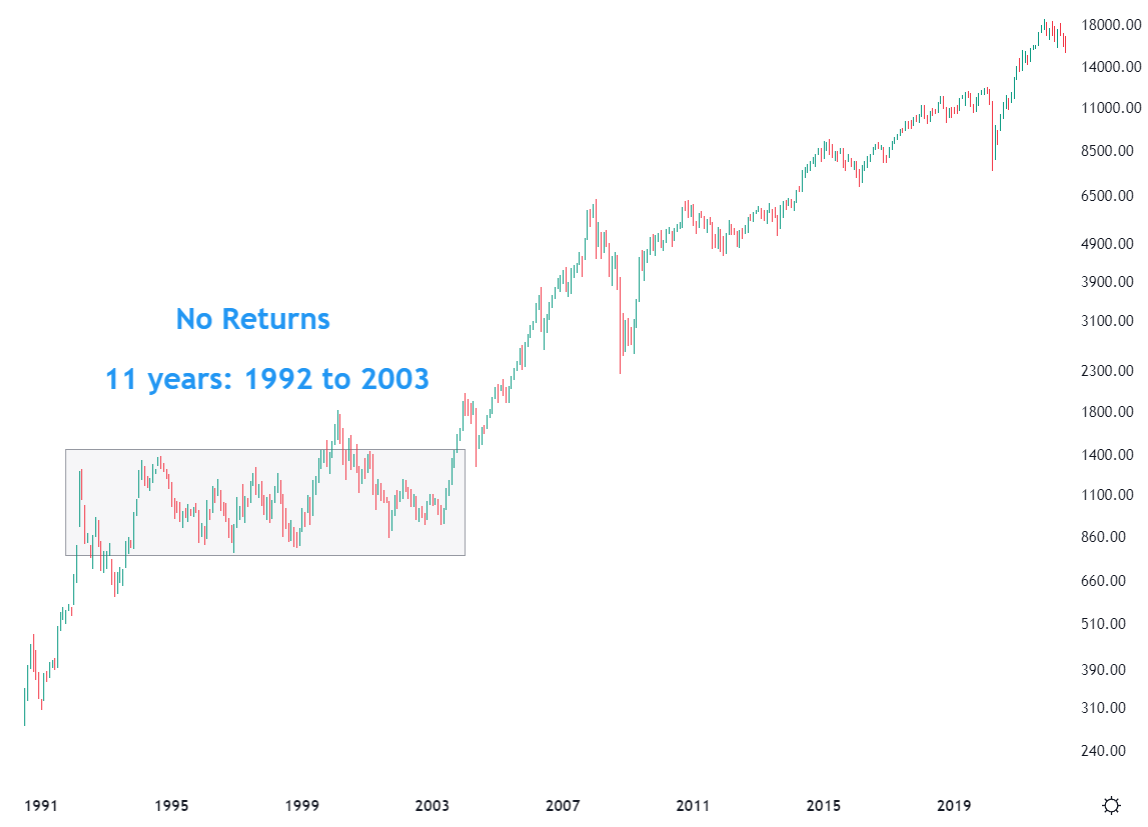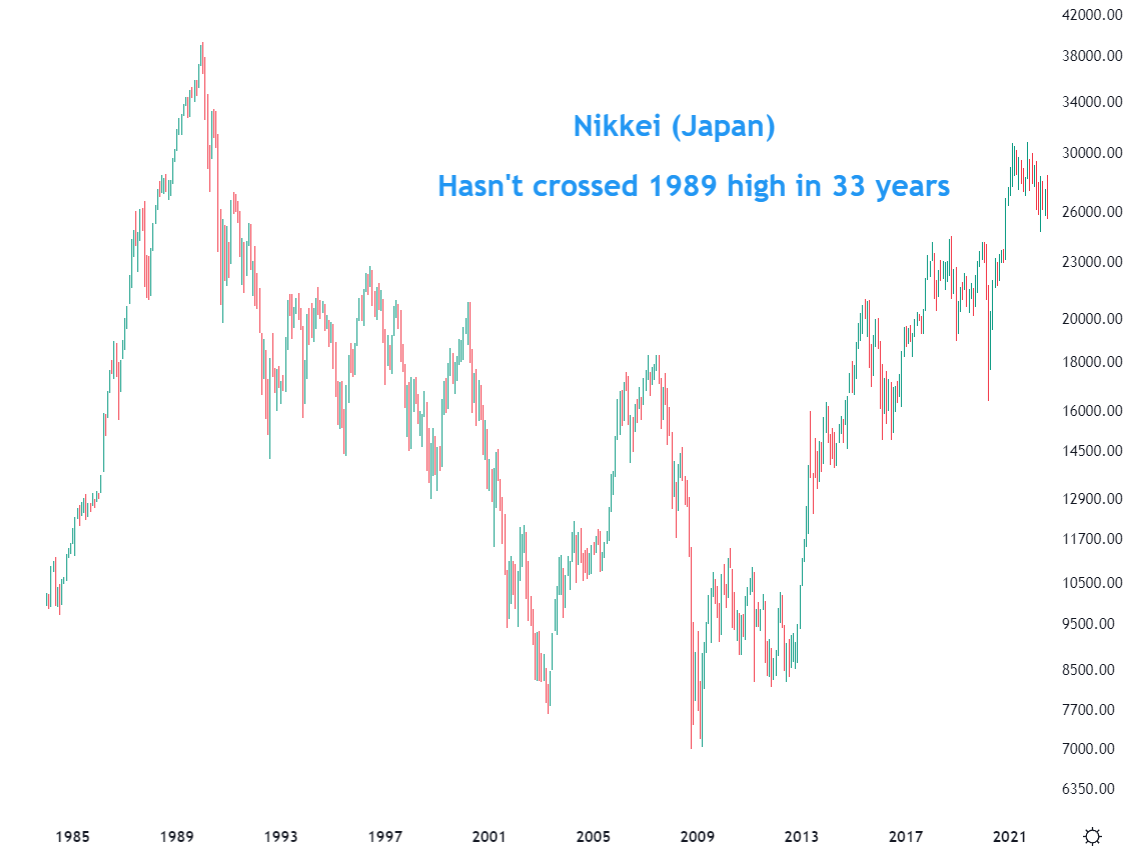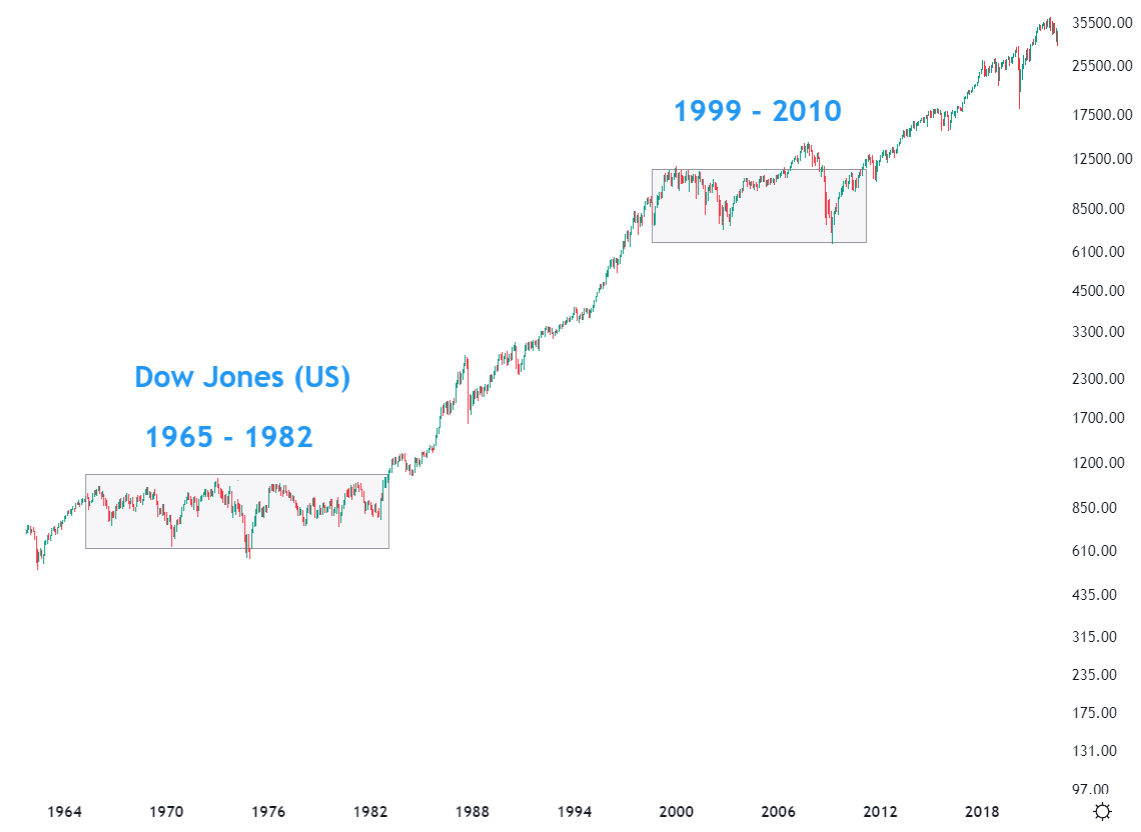Financial advisors will tell you the stock market is the right place to invest if your investment period is long.
Ideally, more than 5 years and preferably 10 years – to generate good returns.
Is this true? Are returns from equity investment ‘guaranteed’ over a 10-year period?
The answer to the question is, no. There is absolutely no guarantee for anything in the stock market.
This article will be divided into 2 parts. The good news and the bad news.
First, the bad news: You can be invested for a 10-20 year period and still get no returns in the stock market.
It has happened in the past:
- The Sensex (India) did not give any returns between 1992 to 2003. That is 11 years without any returns.
- Dow Jones (US index) did not give any returns between 1965 to 1982. That’s 17 years. This was followed by another period between 1999 to 2010. Again, a long period of 11 years.
- Nikkei (Japanese index like Sensex / Nifty) hasn’t given any returns between 1989 to 2022. That is 33 years without any returns. In fact, Nikkei is still below its 1989 high.
Check out the charts below.



If you enter the market at the peak of a bull run, it does not matter how long you stay invested – the chances of earning good returns from equity is close to zero.
In fact, if you enter at the extreme peak, then the chances of you incurring heavy losses is more than the chance of you earning a return.
Unfortunately, most people start investing during the peak of a bull run. Because that is the time when there would be positive news all around.
If price-wise corrections (50% falls) are extremely painful. Time-wise corrections (10 years of no returns) can be extremely frustrating.
To avoid this, never invest during good times. Have patience to wait for the bad times, they always come.
The Good News
Long periods of no returns usually come after a bull market. Long-term tops are also made when a country struggles to sustain the pace of its economic growth and begins to stagnate or fall.
India still has a long runway for growth. We are currently the fastest growing economy in the world. The growth story, considering the size of the population, is still intact.
Since the market’s growth is directly linked to the economic growth of the country, the Indian market is ‘highly unlikely’ to undergo a 5-10 year period of no returns.
In Japan’s case, in the 1980s – both the country and the market peaked out.
The Japanese economy, which was almost entirely destroyed after the World War 2, prospered in the decades that followed and peaked in the 1980s. It was one of the most insane bull markets of all-time.
If calculated from the low in 1946 to the peak in 1989 – the Nikkei went up more than 1300 times in 43 years!
After a bull run that lasted decades, the country hit a multi-decade peak.
That does not mean people in Japan did not make money. It only means people who invested at the peak or near the peak did not make money.
In the last 10 years, the Japanese market has gone up 3 times. A 25-year-old who invested in 2012, still made a lot of money.
But a 25-year-old who invested in 1988 – 1989, probably lost his entire life waiting for returns.
Not only is investing at the right time important – being in the right country at the right time is also important. It is also a matter of luck, and judging from the way India is positioned, the chance of us being extremely lucky is quite high.
While there is always a risk of things going wrong – if things even go reasonably well – the coming two decades should belong to India. And those who start investing now should be able to ride the growth wave in the country.
Stop trying to make quick money. Avoid intraday trading. Buy good quality companies and stay invested with a long-term vision. Never forget to respect risk.


Clean and crisp!
The premise that the market did not give any return at all over a particular period of time is slightly misplaced.